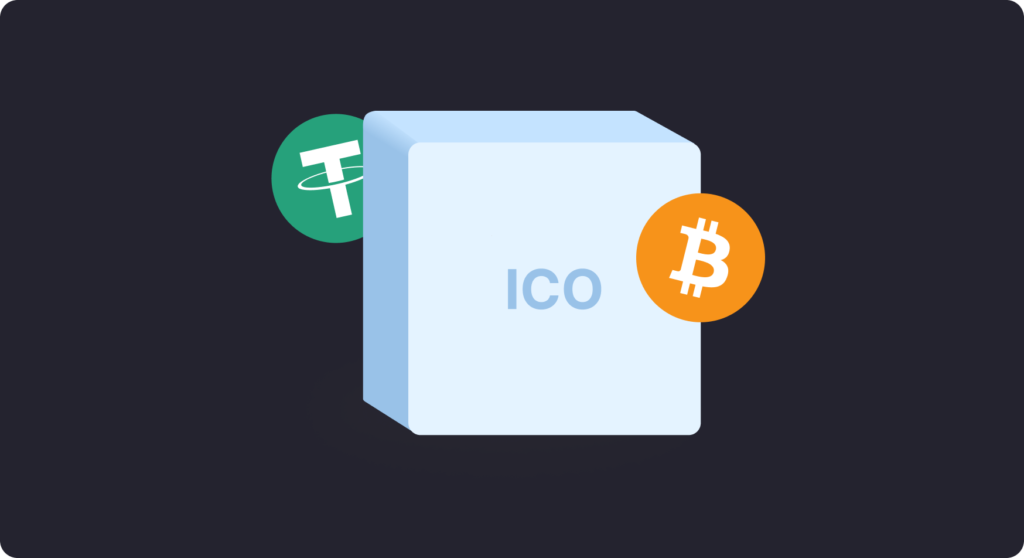Introduction to ICOs. Gold Mine or a Risky Investment For New?

Initial Coin Offerings (ICOs) have become a popular method for blockchain startups to raise capital by issuing new cryptocurrencies or tokens. This article provides an overview of ICOs, how they work, and key factors to consider when evaluating them.
Definition
ICO is a fundraising mechanism in which a blockchain-based project sells its underlying cryptocurrency or token to early investors. These tokens typically provide some utility within the project’s ecosystem or represent an investment in the project.
How ICOs Work
- Whitepaper Release
- The project team releases a detailed whitepaper outlining the project’s goals, technology, tokenomics, roadmap, and team members.
- Token Creation
- The project creates its cryptocurrency or token, which will be sold during the ICO.
- Marketing and Promotion
- The project team markets the ICO to potential investors through various channels, including social media, forums, and industry events.
- Token Sale
- Investors purchase tokens using established cryptocurrencies like Bitcoin (BTC) or Ethereum (ETH) during the ICO period.
- Development and Launch
- The funds raised are used to develop the project according to the roadmap. Investors typically receive their tokens once the ICO is complete.
Key Factors
- The Team
- Experience and Background: Research the team members’ backgrounds, including their experience in blockchain, technology, and business. Check their LinkedIn profiles, previous projects, and reputation within the industry.
- Advisors: A strong advisory board with reputable industry experts can add credibility to the project.
- The Whitepaper
- Clarity and Detail: A well-written whitepaper should clearly explain the project’s goals, technology, use case, and tokenomics. It should be detailed and transparent.
- Feasibility: Assess whether the project’s goals are realistic and achievable. Consider the technical challenges and the team’s ability to overcome them.
- Tokenomics
- Utility: Understand the utility of the token within the project’s ecosystem. A token with clear and necessary use cases is more likely to succeed.
- Supply and Distribution: Examine the total token supply, distribution plan, and allocation. Ensure that a significant portion of tokens is reserved for development and incentivizing the community.
- Fundraising Goals: Consider the hard cap (maximum funding) and soft cap (minimum funding) of the ICO. Unrealistically high caps may indicate greed, while too low caps may limit the project’s potential.
- Roadmap
- Milestones: Evaluate the project’s roadmap for clear, achievable milestones. A realistic timeline with well-defined goals shows that the team has a structured plan.
- Progress: Check if the project has already achieved any milestones or developed a prototype. Projects with some progress are generally less risky than those at the idea stage.
- Community and Market Demand
- Community Engagement: A strong, active community indicates interest and support for the project. Check social media platforms, forums, and official communication channels.
- Market Need: Assess whether there is a genuine market need for the project’s solution. Consider the competition and how the project differentiates itself.
- Legal and Regulatory Compliance
- Regulatory Environment: Ensure the ICO complies with relevant regulations in its operating jurisdictions. Non-compliance can lead to legal issues and jeopardize the project.
- KYC/AML Procedures: Legitimate ICOs often implement Know Your Customer (KYC) and Anti-Money Laundering (AML) procedures to ensure compliance and protect investors.
- Educate yourself about popular crypto scams. Click here to learn more.
- Partnerships and Collaborations
- Strategic Partnerships: Partnerships with established companies or organizations can enhance the project’s credibility and potential for success.
- Collaborations: Look for collaborations with other blockchain projects or industry players that can add value to the project.
Red Flags to Watch Out For
- Lack of Transparency
- Anonymous Team: Be wary of projects with anonymous or undisclosed team members.
- Incomplete Information: Avoid ICOs with vague or incomplete whitepapers, unclear tokenomics, or lack of detail about the project’s progress and future plans.
- Unrealistic Promises
- Guaranteed Returns: Be cautious of projects promising guaranteed returns or unrealistic profits.
- Overhyped Marketing: Excessive hype and aggressive marketing without substantial backing can be a sign of a scam.
- Poor Community Feedback
- Negative Reviews: Pay attention to reviews and feedback from the community and industry experts. Persistent negative comments or concerns should be taken seriously.
- Inactive Community: A lack of engagement or an inactive community may indicate limited interest or support for the project.
Practical Steps to Evaluate an ICO
- Conduct Thorough Research
- Read the Whitepaper: Study the whitepaper in detail to understand the project’s goals, technology, and tokenomics.
- Research the Team: Investigate the team members’ backgrounds, experience, and track record.
- Analyze the Tokenomics
- Understand the Token’s Utility: Ensure the token has a clear and necessary role within the ecosystem.
- Check Supply and Distribution: Evaluate the total supply, distribution plan, and allocation to development and community incentives.
- Assess the Roadmap and Progress
- Evaluate Milestones: Check if the roadmap has clear, achievable milestones.
- Review Progress: Look for evidence of progress, such as a prototype or achieved milestones.
- Engage with the Community
- Join Social Media Channels: Participate in the project’s social media channels, such as Telegram, Discord, and Twitter, to gauge community engagement and sentiment.
- Read Reviews and Feedback: Look for reviews and feedback from other investors and industry experts.
- Verify Legal and Regulatory Compliance
- Check Compliance: Ensure the project complies with relevant regulations and implements KYC/AML procedures.
Summary
Initial Coin Offerings (ICOs) provide an innovative way for blockchain projects to raise capital and for investors to participate in the growth of new technologies. However, investing in ICOs carries significant risks, and it is essential to conduct thorough research and due diligence. By evaluating the team, whitepaper, tokenomics, roadmap, community engagement, and legal compliance, investors can make more informed decisions and mitigate potential risks. Always be cautious of red flags and remember that while ICOs offer exciting opportunities, they also require careful consideration and analysis. However, if you want to invest in an ICO, and try your chances, you may need some stablecoins. Go to the Cornerswap platform to securely buy your stablecoins and other crypto,
